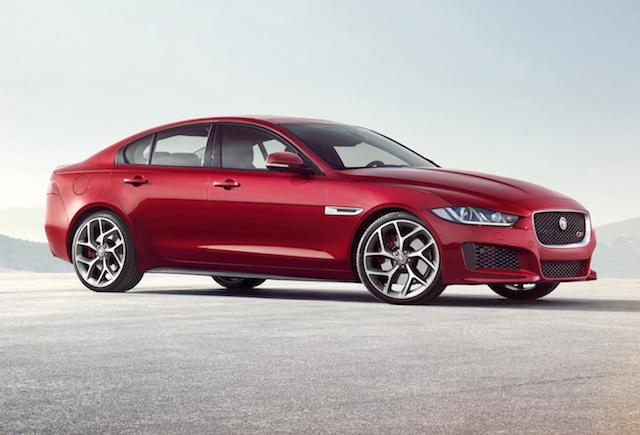
The Jaguar XE sedan is pretty much what the motoring world expected – a sleek, sporty, yet conservative design very much typical of the brand’s lineage.
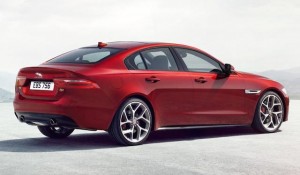 Chief designer Ian Callum wasn’t going to reinvent the Jaguar wheel. “We decided to stick with the Jaguar design philosophy,” he said. “People have started to get used to Jaguar and what they look like. The XE is a sports saloon with a long bonnet, great wheel-to-dash proportions, the cabin set backwards and a coupe profile. But we’ve still got great packaging inside.”
Chief designer Ian Callum wasn’t going to reinvent the Jaguar wheel. “We decided to stick with the Jaguar design philosophy,” he said. “People have started to get used to Jaguar and what they look like. The XE is a sports saloon with a long bonnet, great wheel-to-dash proportions, the cabin set backwards and a coupe profile. But we’ve still got great packaging inside.”
Jaguar showed off the rear-drive XE at a glitzy look-see in London before its official launch at the Paris motor show next month, where its details and dimensions will be made public. However, Callum did confirm that it was “longer than a 3-Series, shorter than an A4 and with an interior comparable with the C-Class”.
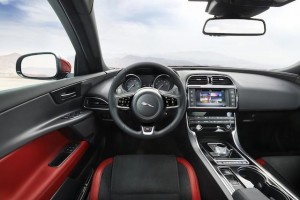 A new touch is the Jaguar leaper on the bootlid of the XE with the word Jaguar underneath, a new addition to all Jaguar models from next year as it moves to better identify the British brand globally. The leaper wasn’t unexpected – Callum has said Jaguar has something of an identity crisis in some markets.
A new touch is the Jaguar leaper on the bootlid of the XE with the word Jaguar underneath, a new addition to all Jaguar models from next year as it moves to better identify the British brand globally. The leaper wasn’t unexpected – Callum has said Jaguar has something of an identity crisis in some markets.
Much rides on the global success of the XE as it goes up against the likes of the Mercedes-Benz C-Class, BMW 3-Series, Audi A4, and Lexus IS. More than 3000 jobs have been created in Britain by the XE project. Jaguar has invested around NZ$4 billion in a new plant to build the car and its new family of so-called Ingenium engines that will be available across the Jaguar Land Rover range.
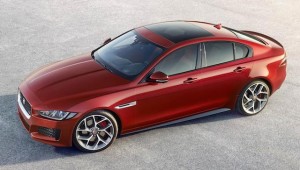 The XE will arrive in New Zealand next year. No details on its weight as yet, a crucial factor in Jaguar’s claim that it will be the best driver’s car in the segment. It’s pretty much all-aluminium, with most of the material in the platform and bodyshell.
The XE will arrive in New Zealand next year. No details on its weight as yet, a crucial factor in Jaguar’s claim that it will be the best driver’s car in the segment. It’s pretty much all-aluminium, with most of the material in the platform and bodyshell.
Jaguar says the XE is 20 per cent stiffer than the bigger XF, an advantage in creating a ride/handling balance. Up front is a double wishbone suspension set-up, tuned to mirror that of the XFR. At the rear is a multi-link system. The suspension even features slipping fixings that act like a fuse to limit damage if the driver hits a kerb.
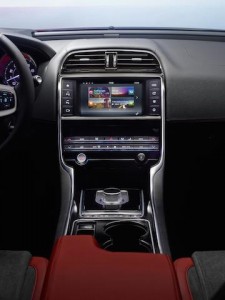 The steering is electrically powered for the first time in a Jaguar, with settings that can be tweaked using Jaguar Driver Control – with Dynamic, Normal, Eco and Winter modes. Another first for many years is a manual gearbox, an all-new six-speed unit. The optional automatic is a revised version of the eight-speed ZF automatic used elsewhere in the Jaguar range.
The steering is electrically powered for the first time in a Jaguar, with settings that can be tweaked using Jaguar Driver Control – with Dynamic, Normal, Eco and Winter modes. Another first for many years is a manual gearbox, an all-new six-speed unit. The optional automatic is a revised version of the eight-speed ZF automatic used elsewhere in the Jaguar range.
Jaguar Driver Control also includes All Surface Programme Control – a system developed from Land Rover’s Terrain Response set-up – which controls the engine output, brakes and differential to enable the car to negotiate slippery surfaces. All-wheel-drive models will be available later on in production
The XE will come with a choice of five engines. For starters, there’s a 2.0-litre 120kW/380Nm diesel from the Ingenium family with claimed fuel use of 3.7 litres/100km (75mpg). A more powerful version of the same engine is also available.
The petrol units include 2.0-litre Ingenium engines with different outputs, and a supercharged 250kW 3.0-litre V6 from the F-Type, good for a claimed 0-100km/h sprint of under five seconds.
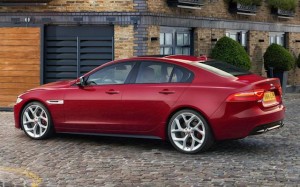 Safety equipment includes autonomous emergency braking, a stereo forward-facing camera for traffic sign recognition (that checks what it sees with information from the sat-nav), lane departure warning, blind spot monitoring, self-parking and adaptive cruise control. The head-up display uses lasers for a crisper image than an LED system and shows speed, safety warnings and sat-nav directions.
Safety equipment includes autonomous emergency braking, a stereo forward-facing camera for traffic sign recognition (that checks what it sees with information from the sat-nav), lane departure warning, blind spot monitoring, self-parking and adaptive cruise control. The head-up display uses lasers for a crisper image than an LED system and shows speed, safety warnings and sat-nav directions.
